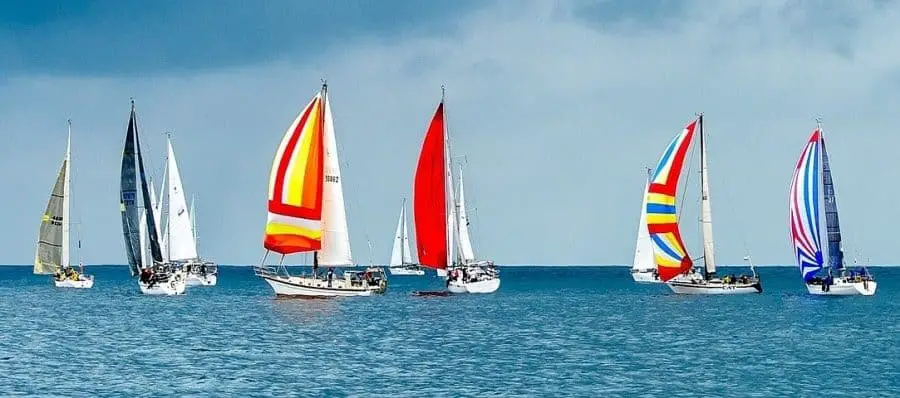If you’ve ever considered taking part in a sailboat race, whether professional or recreational, you might not have thought that there are a number of different types of sailboat races.
My first experience was an informal “I bet we can beat you to that island”, so nothing too sophisticated the first time around for me. Of course, there are more serious and exciting races for sailboats out there!
So what are the different types of sailing races? The most popular type of sailing races include:
- Fleet
- Match
- Team
- Regatta
- Offshore/Oceanic
- Paralympic
- Twilight
- Club
Whether you’re just starting to learn how to sail or you’ve had some experience already on the water, taking part in a race can be quite fun.
Making sure you tack at the right moments, trim the sails so they’re fully grabbing the wind, and communicate effectively with the rest of your crew is crucial to winning a sailing race.
Fortunately, the sailing community can be one of the friendliest out there so getting your feet wet (no pun intended) with sailing races is not only fun but a great way to hone your sailing skills by learning and doing in clutch situations.
And a great first step into joining that next sailing race is to find out the different types of sailing races, which we’ll dive into now!
8 Types of Sailing Races
1. Fleet Racing
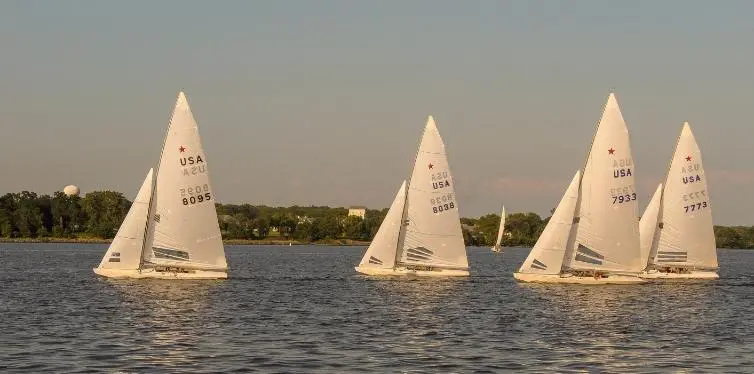
The most common type of sailing race that you can compete in is a fleet race. Put simply, a fleet race can be from a handful to hundreds of sailboats racing around a specified course. The course is usually a set of landmarks and can be as small as a lake and as large as an ocean (e.g., the Volvo Ocean Race).
Fleet races have two major distinctions: one-design and handicap. A one-design fleet race indicates that all of the sailboats competing in the race must be of the same design, sail area, etc.
This is the go-to style of a fleet race for Olympic sailing competitions. A handicap fleet race occurs when the competing sailboats are designed differently resulting in giving them a different rating so their final times can be adjusted accordingly.
2. Match Racing
Another very common type of sailing race is match racing, which is when two sailboats that are exactly the same in terms of design, brand, and anything else race each other in a course race. Similar to fleet racing, the match race also takes place in a so-called course with specific locations to reach.
A match race can be very exciting and full of pressure because there are only the two identical sailboats with the only difference being the crew.
That means precision and execution are extremely important! Also, match races always take place in a windward-leeward course, which consists of an upwind and a downwind leg that are lapped 1-4 times depending on the race.
3. Team Racing
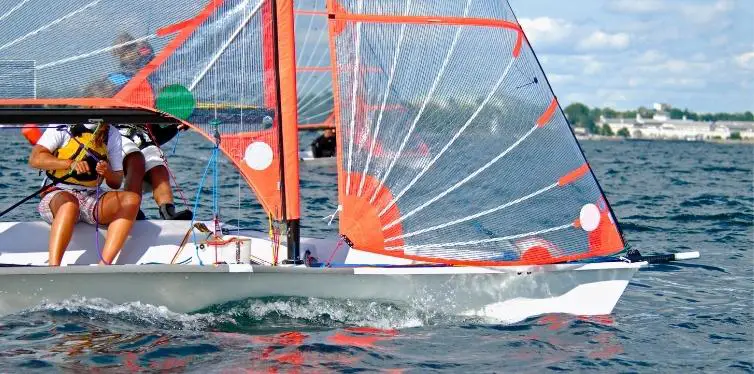
Team racing can be one of the more exciting types of racing since it involves two teams of 2-3 sailboats racing a course similar to a fleet and match race.
While quite similar to a match race in terms of having two teams, the added bonus of having multiple sailboats gives it a bit of nuance. Just like a match race, the sailboats tend to be identical, however, team races don’t often last as long and thus are quite short.
A team race works by divvying up points to each team based on the sailboats that cross the finish line in a certain order.
For example, the first sailboat receives one point, the second sailboat receives two points, and so on. After every single sailboat has crossed the finish line, the points are tallied up per team and the team with the lowest number of points wins.
4. Regatta Racing
Probably my favorite type of sailing race is a regatta race simply because it’s generally more relaxed (but, surely, not always) than the previous races mentioned and they can last several days.
Plus the format of regatta races can vary widely when it comes to the types of sailboats used, the course, and the number of participants.
Since a regatta race can span multiple days, you’ll always tie your sailboat somewhere during the afternoon or evening and enjoy the company of your team and the rest of the competition.
In my opinion, the social aspect of a regatta race is probably what draws most people to them in the first place. The combination of multi-day sailing, competition, traveling, and social interaction is hard to beat!
5. Offshore/Oceanic Racing
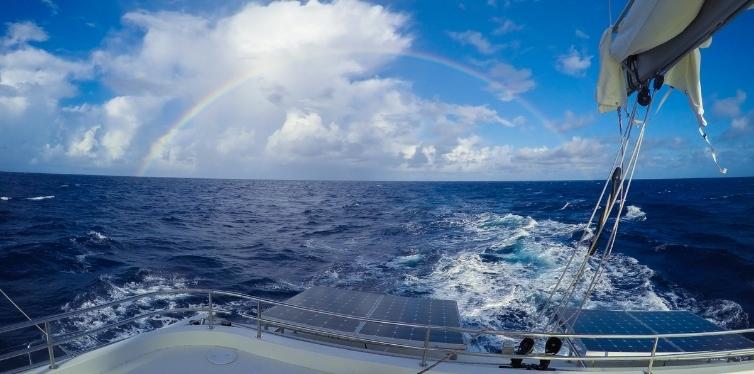
If you’re looking to get out into the Ocean and participate in longer races, look no further than offshore/oceanic racing.
Similar to regatta racing, offshore racing is longer than your average race and can span days and even weeks. The sailboats that compete in offshore racing can either be of the same design (one-design style) or different (handicap style).
Offshore racing requires good experience in operating and navigating a sailboat in open waters as well as having the right sailing gear and endurance to sail day and night.
Most offshore races exceed 800 miles in length as well, so the amount of time sailing should come as no surprise. It’s not uncommon for sailboats to compete in a trans-Atlantic sailboat race with one of the more notable races being from the Canary Islands to the Caribbean.
6. Paralympic Racing
No one should be deprived of sailing and that includes sailing races. Paralympic racing is a type of sailing race that encourages those with disabilities to compete in sailing races.
The types of races can vary between the types we’ve already covered while most are fleet or team races. Based on the abilities of the crew member, teams are matched up and allowed to compete with one another.
7. Twilight Racing
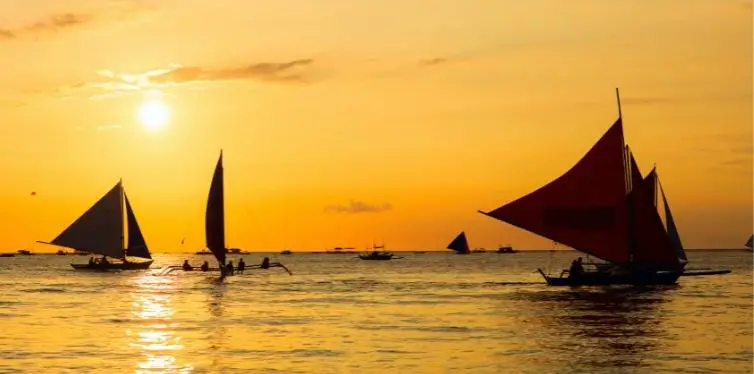
One of the more relaxing and fun types of sailing races is twilight racing since it wraps up toward the end of the evening and includes a social gathering.
There can be any number of sailboats that participate in a twilight race as long as they finish the course and get to a common location for a nice social evening for all the competitors.
Almost without exception, twilight racing happens in the summer months and is quite enjoyable.
After giving it your all during a race, finishing with the sun going down and a drink (or two) in-sight can be a great feeling. Twilight races oftentimes include the use of two sails and sometimes allow for the option of using a genoa or spinnaker sail.
8. Club Racing
If you’re a member of a club or association that’s aimed at sailing, more likely than not you’ll have the opportunity to join in on some club racing.
While this is more of a situation form of the previous types of sailing, they can be a tad bit more competitive since you’re competing with people you’re often in contact with. Who doesn’t want that nice, shiny club trophy!
The Different Types of Sailboats for Racing
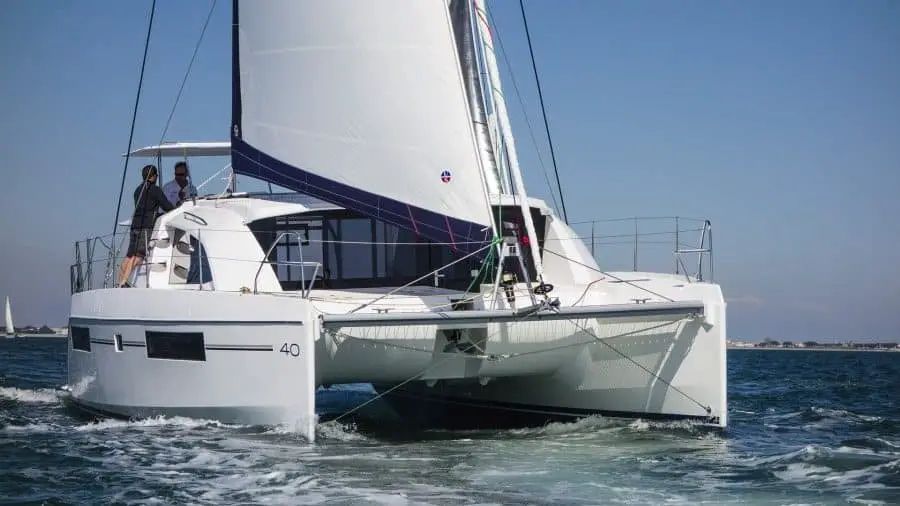
If you end up taking an active part in racing sailboats, you’ll quickly become acquainted with a number of different types of sailboats.
Depending on the sailing race you’ll be a part of, they’ll either allow for a diverse set of sailboats (handicap style) or a specific type of sailboat (one-design style).
Sloop
A sloop sailboat is the classic single mast, double sail setup. The types of sails on a sloop consist of a mainsail and a headsail.
The headsail can be different types of jibs, including the genoa, spinnaker, or gennaker sails. The headsail is connected to the forestay on the mast and runs all the way to the top of the mast.
Catamaran
A catamaran is a sailboat that has multiple hulls (usually two) and no keel. Instead of a keel, a catamaran gets its stability from having a very wide beam.
As a matter of fact, catamarans are usually faster than monohull sailboats, especially when in the running and broad reach points of sail.
Cutter
A cutter is an interesting setup since it’s similar to the sloop, but instead of one forestay it has two. With two forestays on the mast, cutters are able to house two headsails.
This can be a preferred setup because it allows for easy cruising due to it offering a diverse combination of points of sail for different strengths of wind.
Ketch
Just like a sloop, it has a mast that allows for a mainsail and headsail with a full range forestay, but it also has a smaller-sized mast between the mainmast and the stern of the sailboat.
This mast configuration was commonly used in Northern European freighter and fishing boats and is called the mizzen mast.
Related Questions
What kind of sailing gear do I need in a sailing race? You’ll need a good set of deck shoes, clothes that match the weather, a good sailing watch, and gloves.
Are sailing races dangerous? Just like any other sport, there are dangers to sailing races including running into other sailing boats, falling overboard, and being hit by the boom. Unless you’re crossing the Ocean, sailing races are relatively safe compared to other sports.
Do I need to be an experienced sailor to race? You don’t need to be an experienced sailor to join a sailing race as most sailboats are commanded by a captain who has experience already. As a matter of fact, many sailboats need more crew members to participate in races, so being a volunteer crew member is a great way to learn more about sailing.

